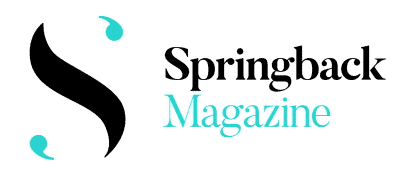What do ‘minor news’ and ‘winter facts’ have in common? In English, not much – but say it in French and you’ll realise that both expressions sound the same. This witty pun also inspired the name of Faits d’hiver festival, which runs in 20 venues all over Paris, ranging from main stages to niche spaces. For the first time in its 27 editions, the 23 performances in the 2025 programme were gathered around a main theme: memory – or ‘contemporary yesterday’, as festival director Christophe Martin puts it. Suffice to say that it remained open to a wide range of works and styles. If the five pieces I discovered from the abundant four-week event were indeed radically different from one another, they unexpectedly echoed one another, reflecting on transmission, heritage, paying tribute and passing on works and a deep embodied knowledge.
Emmanuel Eggermont, About Love and Death (élégie pour Raimund Hoghe)
It was down to dancer and choreographer Emmanuel Eggermont to open the ball at the Théâtre de la Cité internationale. In About Love and Death, Eggermont pays tribute to his late mentor, German choreographer Raimund Hoghe, who died in 2021. The solo is knitted with quotes from Hoghe’s works that Eggermont once performed, playfully and delicately articulating his wrists, elbows and shoulders. His gestures are light and soft, mostly geometrical and minimalistic (joining hands and fingers, stretching arms to each side of his body, walking the line or diagonal). The precision and refinement of his moves underline the deep and rich artistic identity that Hoghe passed on to him.
Yet it is not necessary to know Hoghe’s work to dive into this piece. Not only a dancing elegy, the performance is also filled with Eggermont’s own fantasies. Throughout the medley, the performer also brings back Gene Kelly’s iconic tap dance scene from Singing in the Rain, or the figure of Josephine Baker, lip-syncing and dancing with a blanket as a long skirt.
With his offhand looks and cheeky attitudes, Eggermont artfully keeps the movement going for one hour all to himself. As if drawing his energy from the love for his late mentor, he manages to actualise their connection beyond death, keeping Hoghe alive through motion and emotion. In other words, the piece epitomises the dialectics between reactivation and innovation while working on a dancer’s legacy. What a brilliant way to set the tone for the festival.
Raphaël Cottin, L’Éloge des possibles
At the Centre-Wallonie Bruxelles, dancer, choreographer and Labanotation practitioner Raphaël Cottin takes up a solo piece by Christine Gerard created in the 2000s. From this core, he derives a suite of five short pieces to form L’Éloge des possibles (‘In praise of possibilities’). Standing in a dim warm orange light, Arthur Gautier, in an orange mask with two hollows for eye sockets, slowly steps towards his own shadow, as if walking on the moon. His motion sets a fascinating contrast between softness and heaviness. Each gesture unfolds graciously but is inevitably brought back to the law of gravity. Through Gautier’s travels, great figures of the history of dance emerge, from an arabesque inspired by Giselle’s wilis to a side-on bent pose reminiscent of Vaslav Nijinsky’s Afternoon of a Faun.
When two more performers (Amandine Brun and Paul Grassin) and the choreographer himself join Gautier onstage, Cottin’s own compositions take over. Between slow motion and sharp impulses, the four bodies experiment with extended gestures and tiny shifts. Sensitive and delicate, the sequence culminates in a duet between Cottin and Gautier standing in parallel in canon, brushing each other’s arms. Smoothly switching between solos, trios, quartets and pairs of duets, or from Bach’s baroque music to Eurythmics’ electro-pop, the motion flow constantly transforms.
But in the middle of the piece, Cottin challenges the performers with a surprise five-minute ‘Événement’ (happening) in which they should expect the unexpected. In the show I attended, ten people from the audience took up the lighting with bright pinky torches. Confronted with these new conditions, the performers cleverly try out very diverse types of movement, from slowly crawling on the ground to frenetically bouncing up and down. Eventually finding common ground, they let their bodies be porous to the clinking of the torchlights. Cottin’s assembled work leaves a deep sense of continuum, underlining the infinite possibilities of choreographic composition.
Cie Mossoux-Bonté, Les Nouvelles Hallucinations de Lucas Cranach l’Ancien
In 1990, Patrick Bonté and Nicole Mossoux had already drawn inspiration from German Renaissance paintings by Lucas Cranach the Elder to create Les dernières hallucinations de Lucas Cranach l’Ancien. Twenty-five years on, they dive back into their troubled frame-work to forge Les Nouvelles Hallucinations de Lucas Cranach l’Ancien, with new performers. Behind a wall dressed as a window, silhouettes in noble Renaissance costumes appear and vanish from cutout rectangles of various sizes and layouts. Highlighting contrasts between brightness and darkness, the compositions bring out the whiteness and texture of the dancers’ skin and the rich colours of their garments (from crimson red to emerald green). Working on small formats, the choreographers bring into focus the performers’ skill at embodying fixed figures to exacerbate their expressions. As the characters take flesh, their looks offer terror, dread or angst, or go from praying to preying in an instant.
But thanks to multiple zoom effects, these dynamic and highly theatrical tableaux vivants also pay special attention to fingerwork: gripping, pointing, stroking, exploring; the dancing phalanges even perform the narrative of Adam and Eve’s original sin, as two naked bodies standing side by side cheekily playing with a red apple, dropping it like a hot potato. As in Cranach the Elder’s works, Christian symbols (a fish, ichtys, blades) cross paths with allegorical and mythological references. Hence a Venus lying naked but for a piece of fabric covering her hip, sensually and disdainfully staring straight at the audience. This sibylline, enigmatic atmosphere, amplified by the eerie chaotic soundscape of dissonant cymbals and echoes, progressively reveals shades of humour and eroticism. Surprisingly, the work strikes with impressions rather than emotions.
Bilaka, IlaUNA
It takes at least eight flights of stairs – and as many breaths – to reach the top of Théâtre de la Ville. But the effort is worthwhile. There, under the Cupola, four performers from Basque Country traditional dance group Bilaka and two musicians-singers from Gascon-Basque duet Adar explore Gau Beltza – the Basque Day of the Dead. In IlaUNA (‘fleeting moon’ in the Gascon and Basque languages), dance and music unite to celebrate an obscure ritual.








